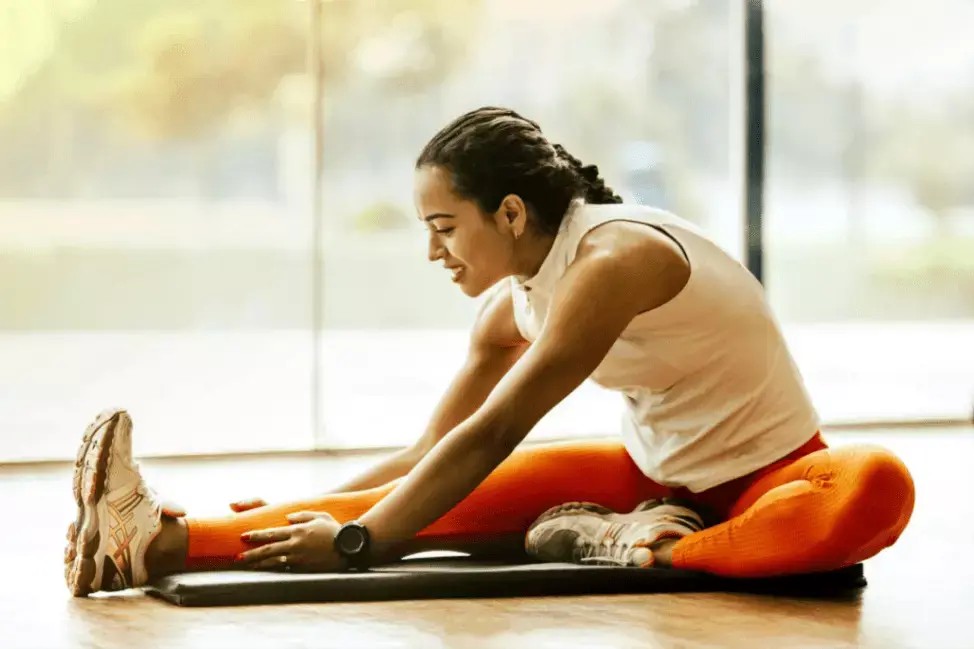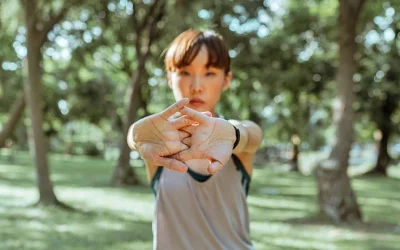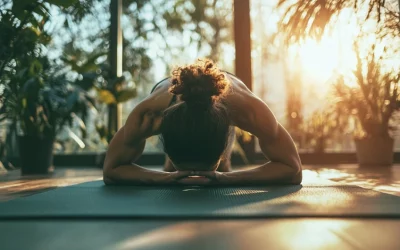Let’s be real—stretching often gets left in the dust, but it’s a total game-changer for your health and fitness. Whether you’re just starting out or you’ve been working out for years, a regular full-body stretch can boost your flexibility, keep injuries at bay, and make you feel amazing every single day. And guess what? It doesn’t take much time or fancy equipment!
In this post, we’re walking you through easy, effective stretches for all fitness levels—step by step. Let’s get stretchy!
The Importance of Stretching for Overall Health
Stretching plays a key role in maintaining both physical and mental well-being. It improves flexibility, promotes muscle recovery, and helps prevent injuries. Incorporating a regular stretching routine into daily life can yield multiple benefits that go beyond simply loosening tight muscles.
One of the primary advantages of stretching is its ability to promote flexibility and increase the range of motion in joints. Regular stretching exercises gradually lengthen muscles and tendons, enabling the body to move more freely.
This enhanced mobility can lead to better posture, as flexible muscles are less likely to pull the body into awkward positions or contribute to slouching. Improved posture not only makes daily movements more comfortable but also reduces the risk of chronic pain in areas like the lower back and neck.
In addition to flexibility, stretching plays an important role in injury prevention. Muscles that have been properly stretched are less prone to strains and other injuries, especially during workout sessions.
Stretching also supports muscle recovery, particularly after workouts or strenuous physical activity. It improves blood circulation, and helps deliver oxygen and nutrients to fatigued muscles, which aids in the repair process.
Additionally, this increased blood flow helps to flush out metabolic waste products like lactic acid, which can build up after exercise and contribute to muscle soreness or stiffness. Regular post-workout stretching can minimize discomfort, allowing athletes to recover more quickly and return to their routine with less downtime.
Mental health benefits are another often overlooked aspect of stretching. Gentle, mindful stretching encourages relaxation by reducing physical and mental tension. Stretching exercises activate the parasympathetic nervous system, which is responsible for calming the body during periods of rest.
This can lead to a noticeable reduction in stress levels, making stretching an effective tool for managing anxiety. The combination of deep breathing and slow, deliberate movements can also promote mental clarity and focus, contributing to an improved sense of well-being.
 Essential Stretching Routines for Every Fitness Level
Essential Stretching Routines for Every Fitness Level
#1 Hamstring Stretch
The hamstring stretch is beneficial for flexibility and alleviating tension in the back of the legs, a common area of tightness. This stretch is particularly beneficial for individuals who spend long periods sitting, as sitting shortens the hamstrings, leading to stiffness and potential discomfort in the lower back and hips.
To perform the lying hamstring stretch, follow these steps:
-
Lie flat on your back with both legs extended.
-
Bend one knee and slowly lift the opposite leg towards the ceiling, keeping it as straight as possible.
-
Grab the back of your raised leg, either behind the thigh or calf, and gently pull it closer to your torso, feeling the stretch along the back of your leg.
-
Hold the position for up to 30 seconds, then switch legs.
While performing this stretch, it’s important to avoid common mistakes. One of the most frequent errors is rounding the back, which can reduce the effectiveness of the stretch and potentially lead to strain.
To prevent this, focus on keeping your lower back flat against the floor and only stretch as far as you can without compromising form. Additionally, avoid pulling too aggressively on the leg, as overstretching can cause injury.
#2 Back Stretch
Stretching the back helps maintain spinal flexibility and supporting good posture. One particularly effective stretch for the back is the Cobra pose, which not only targets the lower back but also engages the chest and shoulders.
To perform the Cobra pose:
-
Start by lying face down on the mat with your legs extended straight behind you and your toes pointed.
-
Position your hands under your shoulders, keeping your elbows close to your sides.
-
Inhale deeply and, while pressing your palms into the mat, slowly lift your chest off the ground. Keep your lower ribs in contact with the mat as you raise your upper body.
-
Hold the pose for 15 to 30 seconds, focusing on engaging the muscles in your back instead of relying only on your arms for support.
For beginners, it’s important to avoid overextending the lower back. If full extension feels too intense, try keeping your elbows slightly bent or lowering your chest to reduce the strain. It’s also beneficial to keep the pelvis pressed into the mat to prevent overarching.
Common mistakes to avoid include:
-
Overstraining the lower back by pushing past your flexibility limits.
-
Lifting the hips off the floor, which can reduce the effectiveness of the stretch.
-
Using only the arms to push up, instead of activating the back muscles.
By maintaining proper form and working within your limits, the Cobra pose can be an excellent tool for improving back flexibility while minimizing the risk of injury.
#3 Hip Flexor Stretch
The hip flexor stretch is an essential movement for improving hip mobility and addressing tightness that often results from prolonged sitting. One of the most effective variations of this stretch is the Samson Stretch, which directly targets the hip flexor muscles. These muscles can become tense and shortened due to inactivity, making this stretch perfect for loosening tightness and promoting better overall movement.
To perform the Samson Stretch:
-
Begin by standing upright with your feet hip-width apart.
-
Step one foot forward into a lunge position, keeping your back leg extended behind you.
-
Lower your hips toward the floor until you feel a stretch in the front of the hip of your extended leg.
-
From here, raise both arms overhead, engaging your core to prevent excessive arching in your lower back. Hold this position for up to 30 seconds before switching sides.
To deepen the stretch for more advanced users, there are a few modifications you can make:
-
Shift your weight slightly forward in the lunge, increasing the depth of the stretch in the hip flexor.
-
Squeeze the glute of the extended leg to improve the stretch and further activate the hip muscles.
-
If flexibility allows, you can also reach back with your hand and grab your back foot, pulling it towards your glutes for a combined hip flexor and quadriceps stretch.
Mind that one of the most frequent errors is over-arching the lower back, which places unnecessary strain on the lumbar spine.
Focus on keeping your core engaged and your pelvis in a neutral position. Additionally, make sure to maintain a straight line from your shoulders to your hips, avoiding any forward or backward leaning.
#4 Quad Stretch
A quad stretch is important for maintaining flexibility and mobility in the thighs, which can significantly reduce muscle tightness, especially after workouts or prolonged sitting. One of the most effective forms of this stretch is the kneeling quad stretch, which specifically targets the quadriceps and helps to improve leg mobility.
To perform the kneeling quad stretch safely:
-
Begin by kneeling on one knee with the other foot flat on the floor in front of you, creating a 90-degree angle with the front leg.
-
Gently pull the ankle of the kneeling leg toward your glutes, using your hand or a strap, while keeping your torso upright.
-
Hold this position for up to 30 seconds, making sure that the hips are pushed slightly forward to deepen the stretch.
For users with tight muscles, variations such as using a yoga block under the knee or gently resting the foot on a wall can ease tension and make the stretch more accessible. This allows gradual improvement in flexibility without overstraining the muscles.
Be careful to avoid these mistakes during the quad stretch:
-
Improper knee alignment (the knee should remain directly under the hip of the kneeling leg).
-
Allowing the torso to lean too far forward, which reduces the effectiveness of the stretch.
-
Overarching the lower back, which can lead to discomfort or injury.
Focusing on these key points helps you perform a safe and effective quadriceps stretch that improves both mobility and flexibility in the legs.
#5 Chest and Shoulder Stretch
The chest and shoulder stretch improves upper body mobility and corrects posture, especially for individuals who spend long hours sitting or working at a desk.
This stretch targets the pectoral muscles and shoulders, which often become tight and shortened because of poor posture or repetitive movements. Stretching these areas can help release tension, promote better movement patterns, and prevent injuries related to muscle imbalances.
One effective stretch for this purpose is the standing pec stretch, ideal for those who struggle with upper body tightness from daily tasks. To perform the standing pec stretch:
-
Stand in a doorway or next to a sturdy object, such as a wall or pole.
-
Place your forearm and elbow at a 90-degree angle on the surface, with your elbow level with your shoulder.
-
Step forward slightly with one foot while gently pressing your chest forward, keeping your back straight.
-
Engage your core to maintain stability and avoid arching your lower back.
-
Hold this position up to 30 seconds, then switch to the other side.
While performing this stretch, focus on engaging the core to support the spine and prevent compensatory movements. Maintaining proper alignment will make sure that the stretch targets the chest and shoulders without putting undue strain on other parts of the body.
However, there are some pitfalls that can reduce the effectiveness of this stretch or even lead to discomfort:
-
Overstretching the shoulders, which can cause strain or injury. It’s important to stop when you feel a moderate stretch, instead of pushing too far.
-
Arching the lower back, which shifts the stretch away from the chest and can lead to lower back discomfort.
-
Failing to engage the core, which can compromise posture and reduce the overall benefit of the stretch.
Correcting these errors involves being mindful of body alignment, focusing on the chest and shoulder area, and using the core muscles to stabilize the torso.
Incorporate Stretching into Your Fitness Routine
Frequency and Duration Guidelines
Stretching regularly is important for improving flexibility and avoiding injury, but it’s important to strike a balance between effectiveness and overexertion. To maximize results, engaging in a full-body stretching routine at least 2 to 3 times per week is recommended. This frequency helps maintain and gradually improve flexibility, especially for individuals working toward long-term mobility goals.
For each stretch, holding the position for up to 30 seconds is typically sufficient to produce noticeable benefits. Repeating each stretch 2 to 4 times per session makes sure that muscles are adequately lengthened and tension is gradually released. This repetition also helps to deepen the stretch without causing strain.
Incorporating stretching either after workouts or as part of a daily routine can aid in muscle recovery and further improve flexibility. Stretching after physical activity is especially beneficial because muscles are warm, making them more pliable and responsive to the stretching process.
Static vs. Dynamic Stretching
Static and dynamic stretching both play important roles in any fitness routine, but they serve different purposes and are most effective when used at specific times.
Static stretching involves holding a stretch position for a prolonged period. This type of stretching helps improve flexibility by lengthening muscles and increasing their range of motion. It is particularly beneficial after a workout, as it aids in muscle recovery and helps reduce post-exercise stiffness.
Holding a stretch gives the muscles time to relax and adapt to the extended position, promoting long-term flexibility gains.
Dynamic stretching, on the other hand, incorporates movement-based stretches that actively engage muscles through controlled motions. These stretches involve repetitive movements that gradually increase the range of motion, such as arm circles or leg swings.
Dynamic stretching is ideal for warming up before physical activity because it helps boost blood circulation, elevate heart rate, and prepare muscles for the demands of exercise. It also improves joint mobility, which can improve overall athletic performance.
Each type of stretching serves a different function within a fitness routine. Static stretching is most appropriate during the cool-down phase, when the goal is to relax and lengthen muscles after physical exertion. Dynamic stretching is best suited for warm-ups, where the focus is on activating muscles and joints in preparation for movement.
“If you’re looking to boost your flexibility, setting aside some extra time for static stretching after your workout is the way to go. But if you’re all about crushing it in sports or high-intensity activities, dynamic stretching in your warm-up is your secret weapon to get those muscles fired up and joints moving smoothly!”
 Exercise Smarter with WeStretch: Your All-in-One Stretching Assistant
Exercise Smarter with WeStretch: Your All-in-One Stretching Assistant
A consistent full-body stretching routine is essential for improving flexibility, supporting injury prevention, and enhancing overall well-being. Carefully following simple yet effective stretches targeting the hamstrings, hip flexors, back, quads, chest, and shoulders, individuals of any fitness level can reap the benefits.
Regular stretching, with attention to proper form and consistency, can help you move more freely, recover faster, and feel better in everyday activities.
Looking for a way to add some fun to your stretching routine? Check out WeStretch—an app that’s like your own personal stretch coach! With tailored plans, easy-to-follow demos, and progress tracking, it’s got everything you need to keep you limber and on point. Ready to get flexible? Sign up today and let’s get stretching!
FAQ
What is a full body stretching routine?
A full body stretching routine includes exercises that target all major muscle groups, promoting flexibility, mobility, and injury prevention. It typically involves stretches for the hamstrings, hip flexors, quads, back, chest, and shoulders, and can be adapted for various fitness levels with static or dynamic variations.
How long should a full body stretch routine take?
A full body stretching routine usually takes 10-20 minutes. Each stretch should be held for 15-30 seconds, and repeated 2-4 times. The time required depends on the number of stretches and whether dynamic movements are included.
Can I do a full body stretch every day?
Yes, a full body stretch can be done daily. Regular stretching improves flexibility and mobility, and can help prevent injury. However, ensure you’re not overstretching or pushing your limits too far, especially if you’re new to stretching.
What are the benefits of a full body stretching routine?
A full body stretching routine improves flexibility, enhances range of motion, supports injury prevention, promotes muscle recovery, and can alleviate muscle tightness. It also improves circulation and posture while contributing to overall physical and mental well-being.
Is it better to stretch before or after a workout?
It’s best to do dynamic stretching before a workout to warm up the muscles and improve the range of motion. After a workout, static stretching is more effective for promoting flexibility and aiding muscle recovery.






